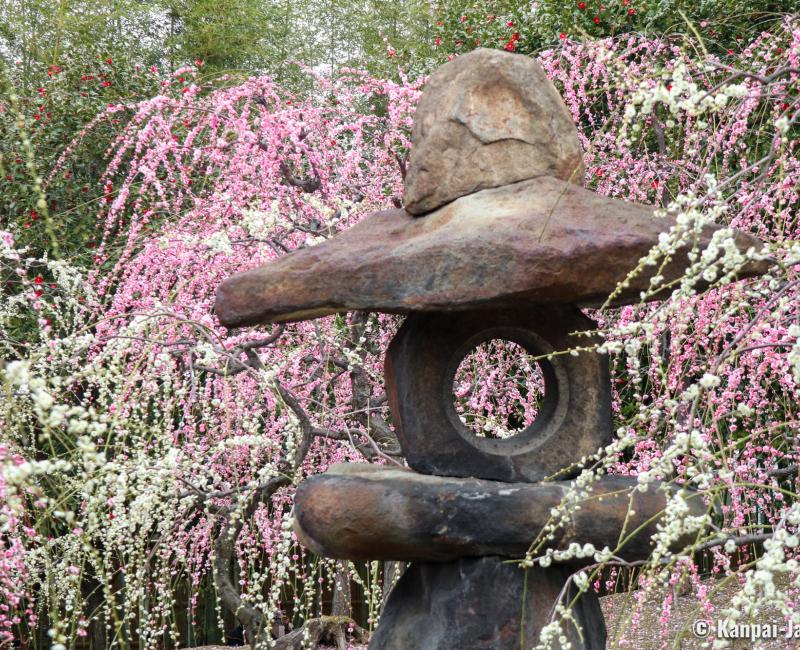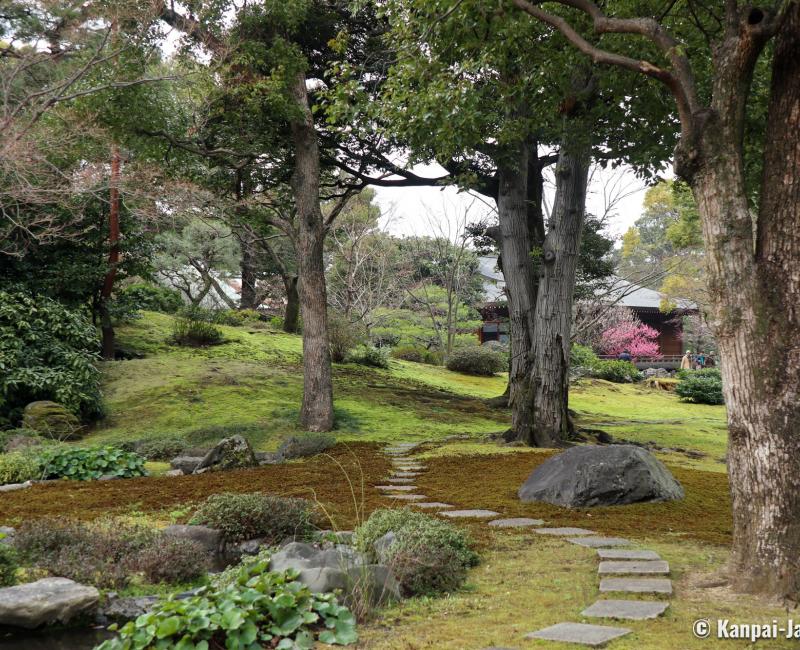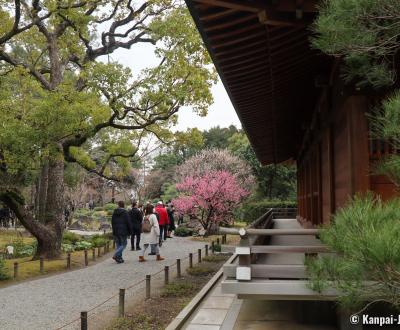Jonan-gu
The Shrine and its Four-season Garden
Jonan-gu is a Shinto shrine located in Fushimi district in the south of Kyoto. Built to protect the capital, it was at the core of Japan’s political life and history. The shrine is now famous for the numerous festivals and its garden adorned with flowers throughout the year.
Jonan-gu’s name literally means "the shrine south of the capital." It was built in 794, the same year as the foundation of the capital Heian (later called Kyoto). Established near the main access road to Heian, its purpose was to protect the city from evil spirits and ensure peace in the country. Several deities are worshipped such as the one responsible for the protection of the Japanese land, the god of courage and the goddess of childbirth and children’s education.
The shrine’s role is deeply related to the protection of Kyoto and the imperial family. Many emperors came here to pray for peace and protection against disasters. In 1086, retired emperor Shirakawa settled his large villa around Jonan-gu, thus making the shrine and its surroundings a place of power, where part of the imperial court and aristocrats also built their residences. Later, in 1868, it was also the place where took place Toba-Fushimi battle, a decisive fight for the restauration of the imperial power and the fall of the shogunate.

A calendar enlivened by traditional festivals
Several festivals are held throughout the year at Jonan-gu shrine. The most famous and attractive to Japanese tourists is Kyokusui-no-Utage:
This poetry contest, in the same manner as in the Heian period, is thus held twice a year. Participants recite the poems they just wrote, in a reconstitution of one of the favorite activities at the Imperial Court between the early 8th century and the end of the 12th century.
Several times a year (in February, March, May, July and September), it is also possible to attend to kagura ritual dance performances, by Shinto priestesses (or miko). They dance while holding bells in one hand and a seasonal tree branch (plum tree, wisteria or chrysanthemum) in the other to appease the gods and ask for their blessing.

An elegant garden blooming in each season
The main attraction of the shrine is however Rakusuien, its 30,000 square meters garden that encompasses the place of worship. It gathers an impressive collection of flowering or ornamental trees, including:
- More than 30 different species of camelias, blooming from November to April,
- 150 wonderful weeping plum trees, or shidare ume, that give the garden the appearance of a paradise when they bloom at the end of February, and,
- A hundred of Japanese maple trees embellishing the alleys in November.
The garden is pleasant all year long and varies according to the seasons. One can also admire the classical cherry trees 🌸, then azaleas in spring, as well as wisterias when summer is near in June. In autumn 🍁, the blue of the Japanese gentian precedes the glowing red of the maple trees.

